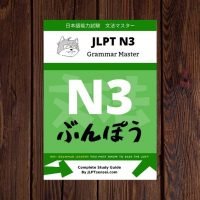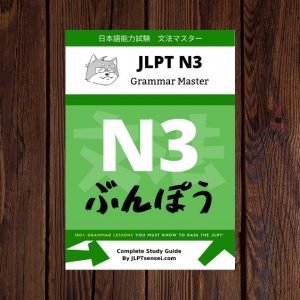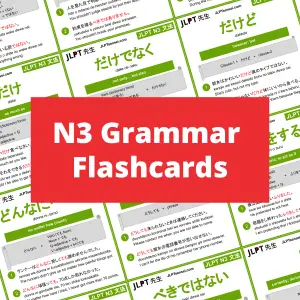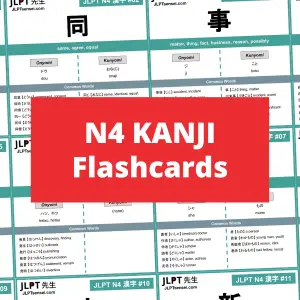Learn Japanese grammar: なかなか (nakanaka). Meaning: very; quite; pretty; rather; just not ~.
Usage 1) なかなか + Noun / Adjective
When なかなか is used with a noun or adjective, the speaker expresses a sense of unexpectedness or surprise.
Usage 2) なかなか + Verb
When なかなか is used with a negative verb, it implies that the speaker has attempted to do something, but it is unable to do it.
For more information about this usage, see JLPT N4 lesson なかなか~ない (nakanaka~nai).

Click the image to download the flashcard.
Download all N3 grammar flashcards.

Download our complete
JLPT N3 Grammar Master E-book.
Access ALL extra downloads, ebooks, and study guides by supporting JLPT Sensei on Patreon.
なかなか - Example Sentences 例文
Each example sentence includes a Japanese hint, the romaji reading, and the English translation.
Click the below red button to toggle off and and on all of the hints, and you can click on the buttons individually to show only the ones you want to see.
Example #1
なかなか面白そうです。
Example #2
彼はなかなか本を読む。
Example #3
この料理はなかなか美味しいですね。
Example #4
彼らはなかなか手ごわい相手ですね。
Example #5
なかなかのドレスですね。君にとても似合うと思うよ。
Example #6
車のエンジンがなかなかかからない。
Example #7
バスを待つだけなのになかなか時間がかかりそうです。
Example #8
もう来るはずなんですが、なかなかバスが来ませんね。
View all JLPT N3 Grammar Lessons
JLPT N3 Study Guide
JLPT N3 Grammar Master [e-book]
Complete Study Guide
This e-book includes every grammar point you need to know in order to pass the JLPT N3, with detailed usage notes and numerous example sentences.
Pages: 378.
Grammar lessons: 182.




